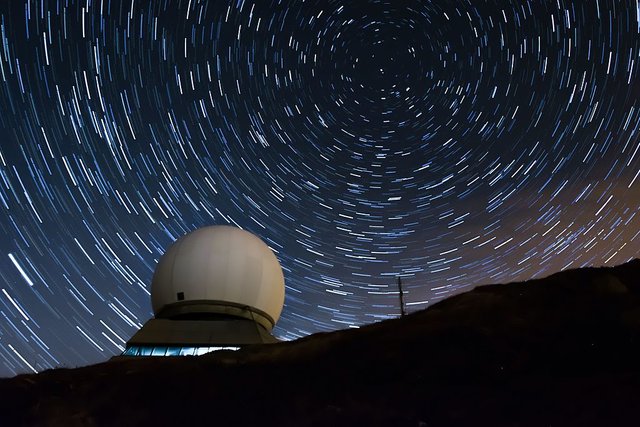Movements of stars in the sky
Being outdoors at night, it seems that the stars are completely immobile. However, it is enough to observe at intervals of a few hours or take a picture with a long exposure time to see that this isn't the case.

By Anton Yankovyi link [CC BY-SA 4.0 license]
The rotation of the Earth means that every day the Sun travels across the sky from east to west. At night, the rotation of our planet does not stop. The evening moon, visible in the east, is already setting in the morning. The stars make the same journey across the sky. And thanks to the wandering of the Earth around the Sun and the inclined axis of our planet, various constellations are visible throughout the year. The night sky is not the same every day. Already after a month changes time when the same constellations could be seen.

By 0x010C link [CC BY-SA 4.0 license]
Constellations cross the sky the same way as the Sun and the Moon. Depending on the geographical location from which we observe, the movement of the stars is different. If we were at the North Pole, then the Polaris would be at the zenith, exactly above our head. In this situation, all night we would see the same constellations all the time, they would only revolve around us, never going behind the horizon. On the equator, on the other hand, the poles of the sky are exactly on the horizon, which is why the constellations rise in the east and wander right over our heads and in the same way they are go behind the horizon.

By A. Duro/ESO link [CC BY 4.0 license]
In the northern hemisphere, the Polar Star is at a certain height above the horizon. Constellations then travel a certain distance from the Polar Star, just like the Sun or the Moon. Thanks to the inclination of the Earth's axis, during its wandering around the Sun, the constellations' visibility changes, so at any time of the year, other parts of the surrounding cosmos are visible. The basic principle of astronomical observation is to always first observe the objects on the west side of the sky, because they the fastest go to escape behind the horizon.
Greetings to lovers of Astronomy!
References:

The images are actually not visible on steemstem.io. What about using standard markdown syntax for them instead:
Thanks in advance for your consideration!
PS: nice post by the way :)
This post has been voted on by the SteemSTEM curation team and voting trail in collaboration with @curie.
If you appreciate the work we are doing then consider voting both projects for witness by selecting stem.witness and curie!
For additional information please join us on the SteemSTEM discord and to get to know the rest of the community!